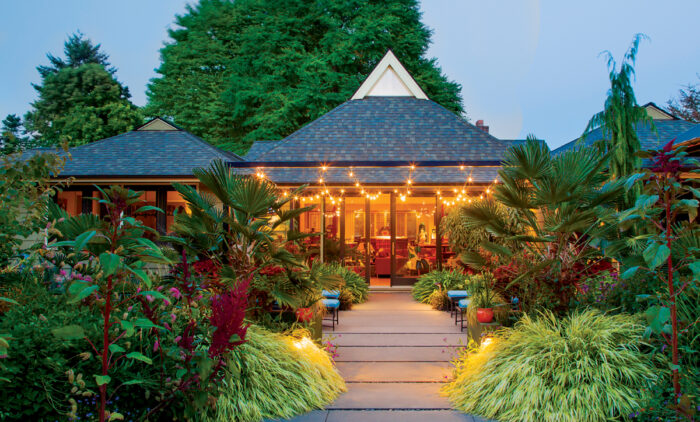
Some gardens are tableaus, living paintings that one walks by and looks at, like some sort of marvelous billboard. There might even be another tableau right across from it, which you can look at in the same manner as you turn and walk back in the other direction.
A lot in a little spaceWhen you are on a wonderful journey, you never notice how smooth the road is. You only notice if it is bumpy. Like a smooth road, the hardscape in this garden controls your gaze, moving you along without your really noticing it.
|
Designed by Laura Crockett, the garden of Craig Quirk and Larry Neill is not that kind of a garden. It is a garden you walk into, and then you are immersed. Your attention is drawn by something—a seating area, a piece of art, or an amazing plant. But as you move toward it, you see something else that makes you stop and look. Perhaps you move toward it or make a mental note to circle back around to see what is there. Then, again, your attention is drawn somewhere. Craig and Larry’s garden is not something you look at; it is something you experience. And it is less than a quarter of an acre.
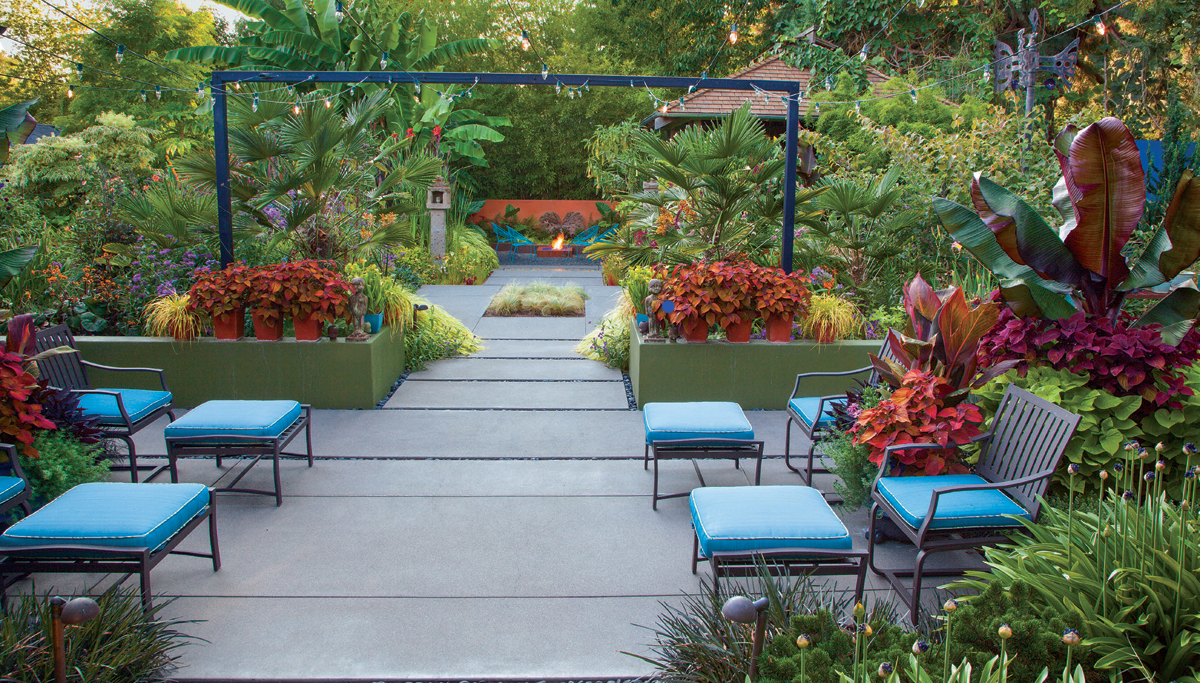
They call their garden “Floramagoria,” a play on the word phantasmagoria, which was, in the days before Bela Lugosi, a type of theater that used lanterns to project images of scary things like demons, ghosts, and skeletons onto a screen as part of the show. While playful monsters are a running theme, Floramagoria is not scary—but it is thrilling, and visitors are certainly in for something to remember.
With gardens that are so unique and so imbued with the personality of the owners, it can be difficult to find elements in them that we can use in our own spaces. But we all want our gardens to be enthralling, unique, and suffused with our personality, so here are some ideas for anyone who wants to bring a little bit of Floramagoria to their landscape.
An exciting garden draws you through it

One of the key lessons we can learn from Floramagoria to make our own designs more effective is how to draw people into and around our gardens. A visit to Floramagoria is a delight, with so many things to look at from so many different vantage points. There is almost always a focal point attracting our attention and making us want to examine it closer.
Look out at the garden from the house, and your eye goes right to the fire pit surrounded by blue chairs in front of a sculpture of a gunnera leaf. Head to that area, and you will discover a beautiful Polynesian-themed dining area that had been obscured by foliage.
Then you see the blue wall with the water feature in front of it. Move in that direction, and you will discover the beaked blue yucca (Yucca rostrata, Zones 5–10), bursting with a ball of spiky foliage. And it continues like that.
All of these focal points make the space feel larger and make wandering around the garden more of an adventure. It is important to point out that while there are many such points, there aren’t too many. What makes the large amount of focal points work is that they are not all visible at all times. More important is that they are worth the journey. There is a payoff for giving each of them a closer look.
Use smaller elements to emphasize a theme
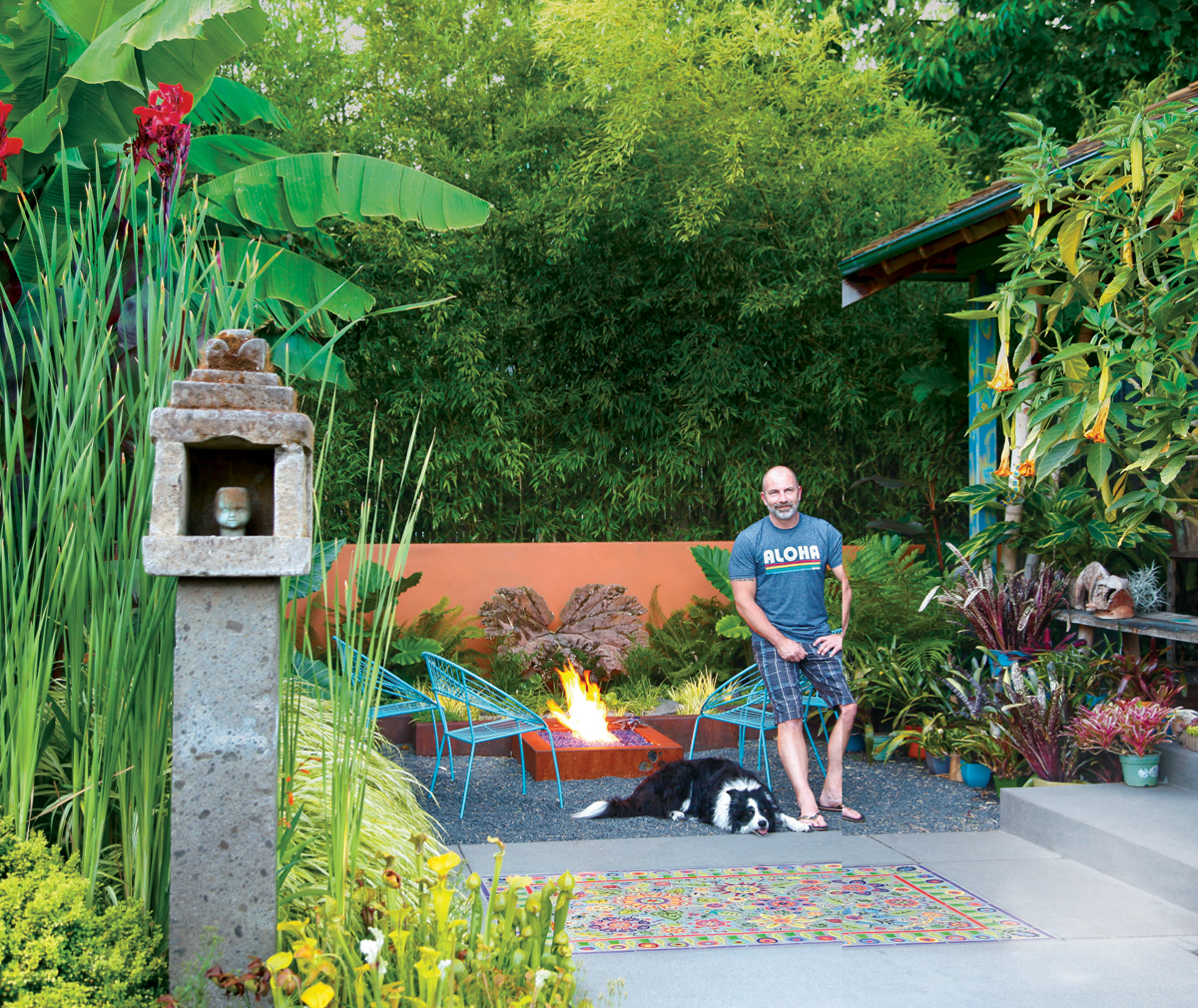
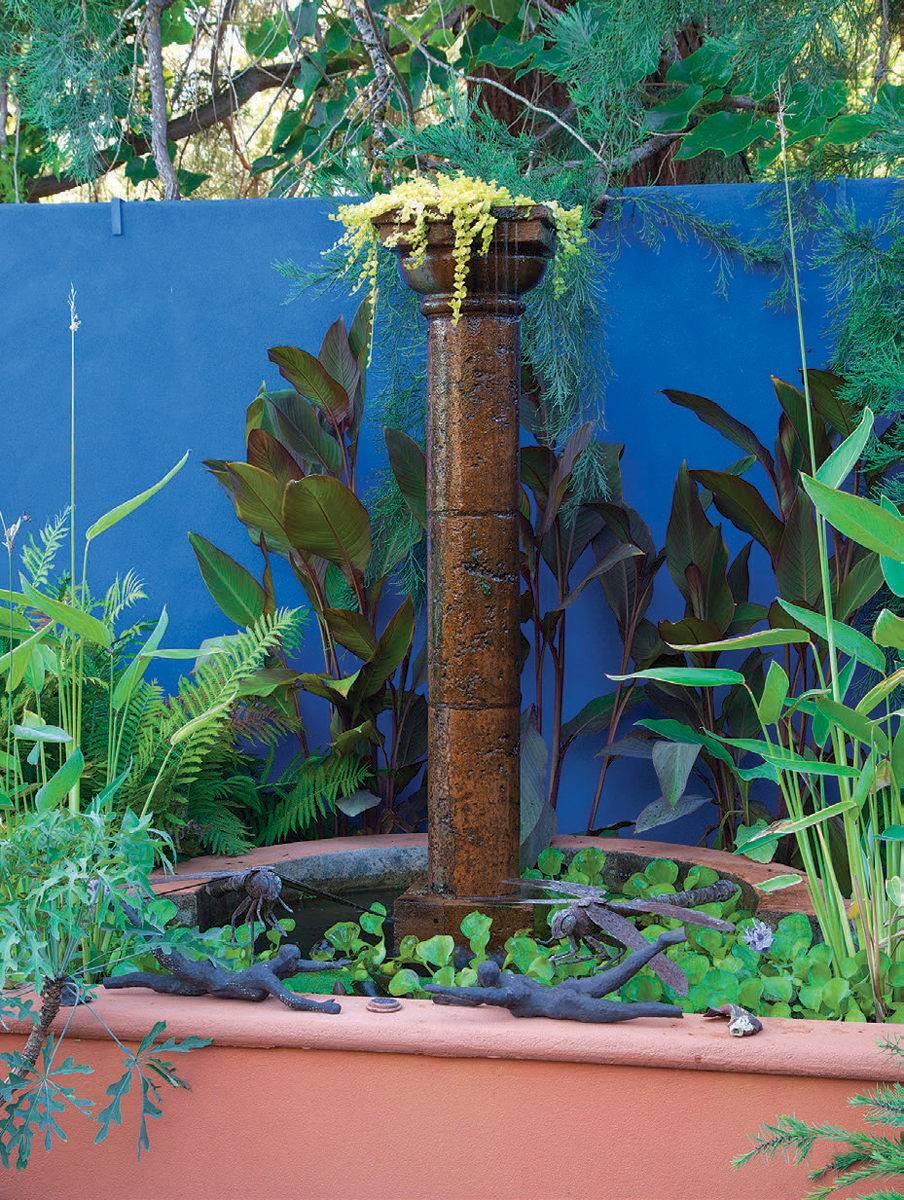
Another thing that makes the journey worthwhile is that each area, each focal point, includes smaller elements that are often just as charming as the thing you noticed from far away. For example, while the fire pit may draw you from the house, it is only there that you see the hand-painted tile mosaic “area rug” designed with flowers and insects. As you are enticed by the dining area, you will notice the intricate artistry of the light above the table, which picks up on the insect-and-pitcher-plant motif used throughout the garden.
Because these smaller elements are often the ones that establish the themes that run through the garden (insects, monsters, and the interplay between bold, fine, and spiky foliage), they are essential to the overall unity and spirit of the garden. These little moments draw you in, so your interest is engaged on levels large, medium, and small. By making you linger, this garden extends the journey, making the space larger and the experience richer.
Of course, we can’t forget about the plants. For every brightly colored wall, alluring seating area, or bold plant form, there are complementary plants so well placed that they create a vignette or combination you did not notice from afar.
 |
 |
Deploy hardscape to hold it together
With all of the things to notice—big and small, living and not, artful and natural—the thing you don’t notice is what makes the overall space work: the structure.
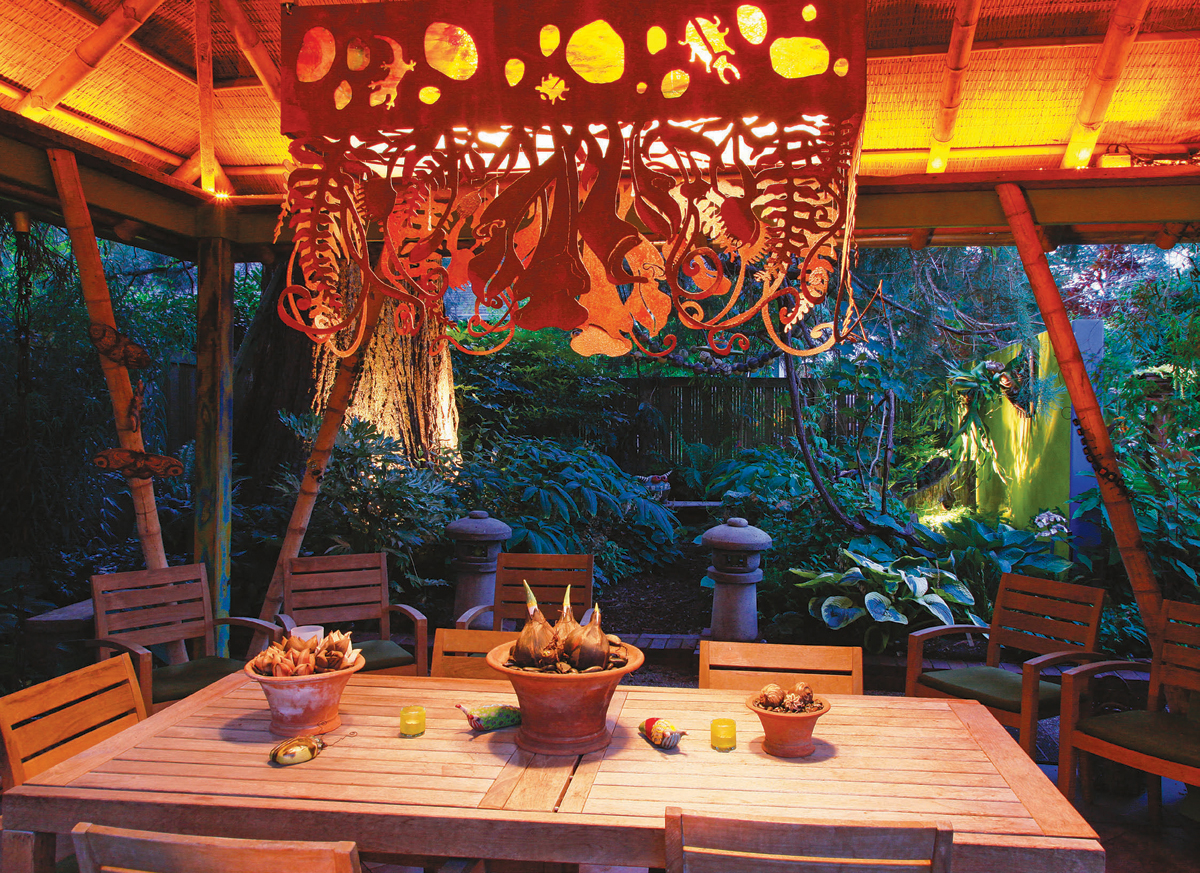
As your view is drawn from the house to the fire pit or from the fire pit back to the house, you don’t necessarily notice that it is the wide, flat hardscape that is directing your view. The path, interesting in its own way, is like a broad section of river, calming things out after a section of wild rapids. The other paths are straight, too, and composed of common gravel. Sometimes they are bordered by a straight, low wall running alongside, colored in a muted green. Easy and calming to look at and to navigate, these elements provide a counterbalance to all the thrills. Like a parent accompanying you to a scary movie, their steady presence lets you know everything will be all right so that you can focus on enjoying the experience.
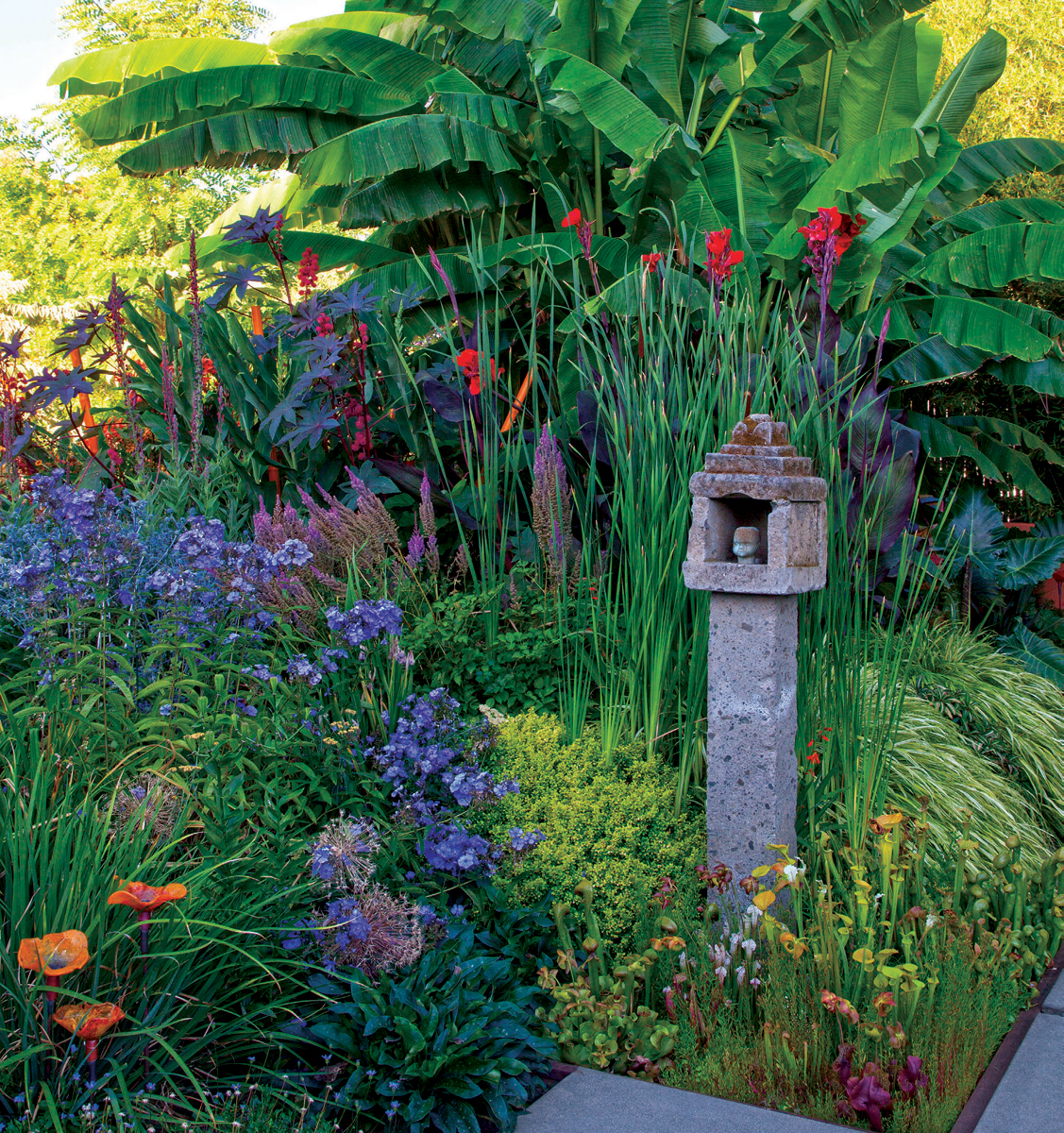
Floramagoria is a garden like no other, but that doesn’t mean there is nothing we can learn from it. By controlling the view, providing interest at multiple levels, and allowing hardscape to provide a calming influence, we can intensify the excitement our gardens provide. Monsters, of course, are optional.
Personal touches make the difference
 |
 |
 |
From the display of vintage garden tools to the interesting works of art, what makes Floramagoria truly a delight are the small details you spot at almost every turn. They help you know that you are not just here to be wowed, but also to be charmed. Craig and Larry seek out local artists to create one-of-a-kind pieces that make their garden unique, such as the light for the dining area or the insect-themed wall sconces that illuminate the patio.
Many of the monsters that pop up in the garden, such as the one perched on the stump, were also made by local artists, as was the “area rug” near the fire pit. Many of these pieces establish or pick up on the motifs used throughout the garden, such as insects and pitcher plants. And one of the most delightful details is one of the smallest, combining themes by having the pitcher plant be the monster.
 |
 |
 |
Steve Aitken is the editor.
Photos: Joshua McCullough


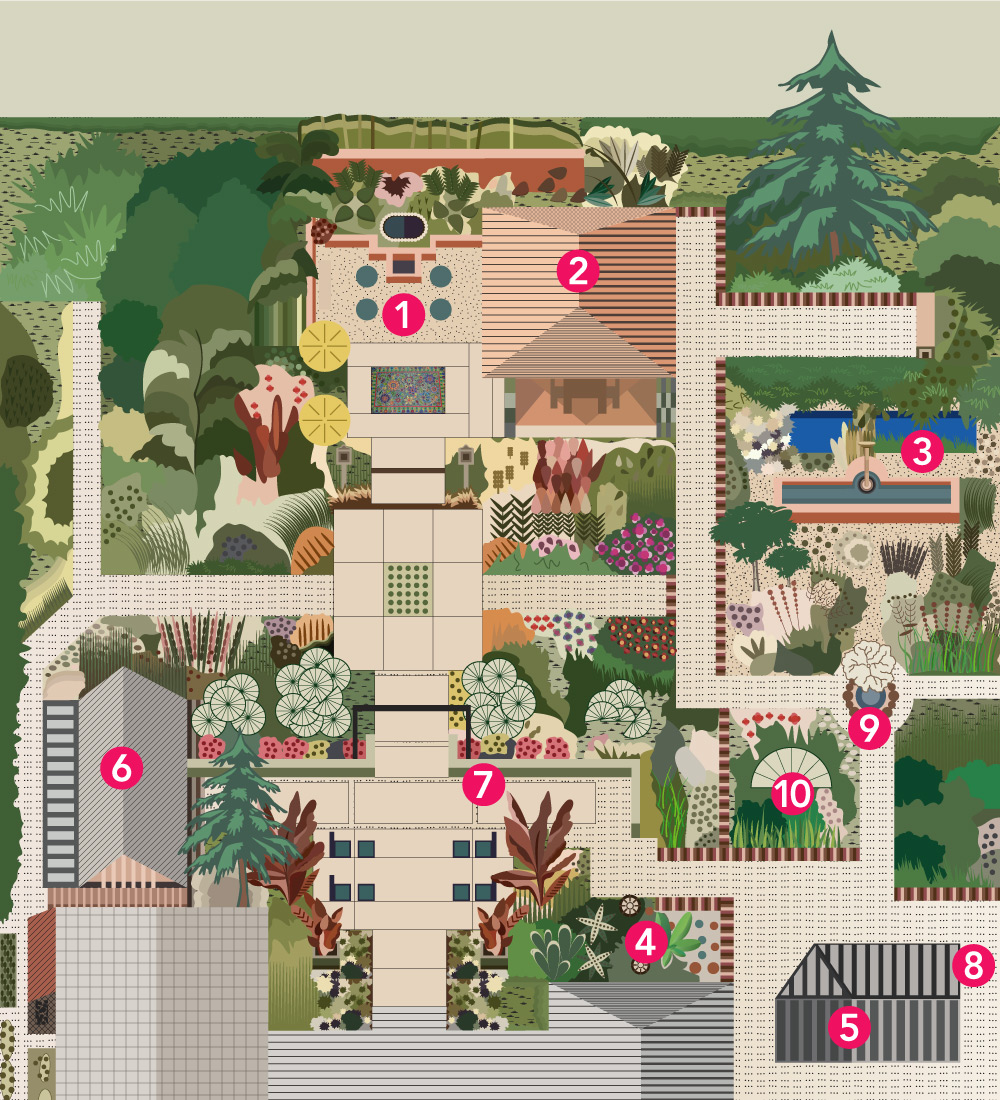

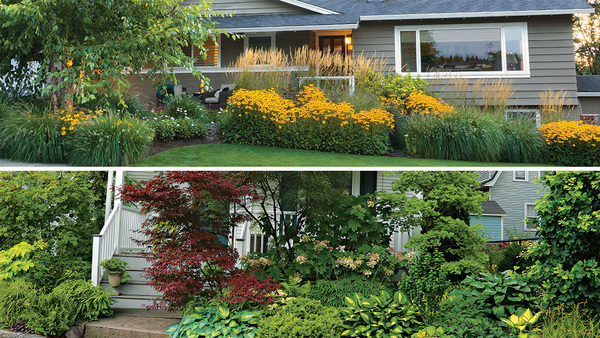















Comments
Love to comment on Google it.
Being on the showcase feels like the Vidmatefor the crowd full of the things.
But in the long run you will, https://tutuappx.com/ as you move around the world.
Log in or create an account to post a comment.
Sign up Log in